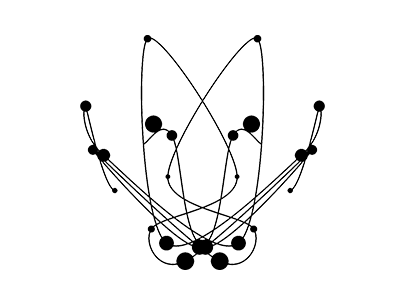Jury Statement
Growing up, we learn cultural specific idioms from our parents and grandparents. However, we are rarely taught the idioms of foreign cultures and only understand their strong ties to specific cultures when we learn a second or third language. Camille Espinas collected forty-five idioms from all over the world and presents them in their original language, as a literal transcript in English, and as a full translation of their actual meaning. This three-fold didactic layer provides the context for the forty-five illustrations that unite the global collection of idioms into a coherent archive. The drawing style of the symbols is quick and sketchy, which is a style called heta-uma in Japan: “upon first look rough, but on a closer look captivating“. It is exactly this style that saves the symbols from becoming too “educational.” The transfer of knowledge is a core mission of graphic design. As a visual translator, the designer makes complex information or unfamiliar content accessible through the means of visual language. While this definition sounds rather serious and educational, Espinas succeeds by offering a lightness that takes the reader on a joyful journey into the international world of idioms. The title of the project is not random either: Looking at this collection from different cultures, languages, and writing systems shows that, not only do a lot of them come from Japan, but, surprisingly, many are related to cats.
Curiosité Killed Die Katze
Project description by the author
Spoken language is the primary form of communication around the world. Within this reality, we are also aware that local jargon differs by region. Being exposed to new languages has never been easier than today, due to mass communication, the Internet, social media, and affordable and easy travel. However, accurately connecting to all the nuances of a new language is not always easy to do. Online translation tools
mostly fail to accurately translate figures of speech. Idioms, as non-literal metaphors that express specific emotions, events, and situations, exist in nearly every language, but often easily get lost in translation unless fully explained by a native speaker. Indeed, many funny translation accidents derive from the confusion about the actual meaning of jargon in certain situations! Cross-translated idioms can often paint fun, awkward, and quirky pictures in non-native speaking minds. These 45 symbols—each a visualization of an idiom representative of different languages—remind us that sometimes additional insight is required to truly develop an affinity with one another.
Camille Espinas
Camille is studying graphic design at the University of Houston, expecting to graduate in Spring 2018. Many other facets of design also intrigue her — including animation, interior design, and fashion. She believes that design is a way in which we can connect, understand, and help each other. Through design, we can make living in this world all the more efficient and beautiful.



